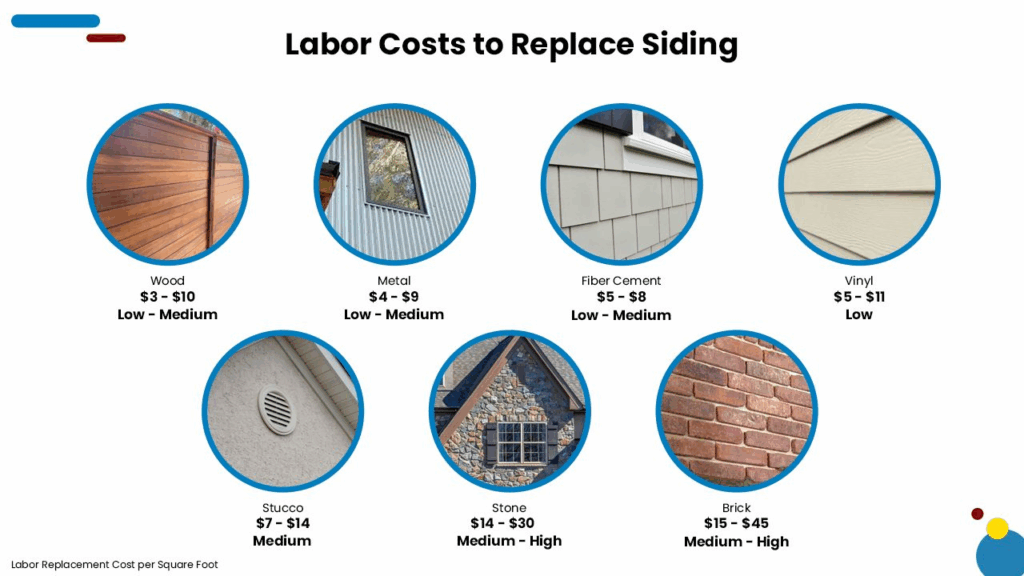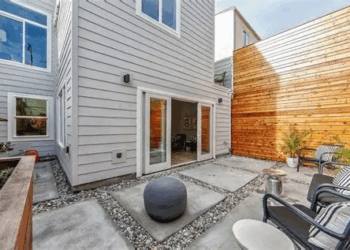
Embarking on the journey of replacing windows and siding, this guide offers a detailed exploration of the costs involved, shedding light on various factors that influence the overall expenses. From materials used to regional variations, this comprehensive overview aims to equip you with the necessary knowledge to make informed decisions for your home improvement projects.
As we delve deeper into the intricacies of window and siding replacements, you’ll discover key insights that will help you navigate the complexities of budgeting and planning for such endeavors.
Factors influencing the cost to replace windows and siding
When considering the cost to replace windows and siding, several factors come into play that can affect the overall expenses. From the materials used to the size of the house and labor costs, each aspect contributes to the final bill.
Let’s delve into these factors to understand how they influence the total cost.
Materials used in windows and siding replacements
The choice of materials for windows and siding replacements significantly impacts the overall cost. High-quality materials such as vinyl, fiberglass, or wood may come at a higher price point but offer better durability and aesthetics. On the other hand, opting for more budget-friendly materials like aluminum or basic vinyl can help reduce costs.
Size of the house affecting the overall cost
The size of the house plays a crucial role in determining the cost of replacing windows and siding. Larger homes require more materials and labor, resulting in higher expenses. Smaller houses, on the other hand, may incur lower costs for replacement due to the reduced amount of materials and labor needed.
Labor costs impacting the total expenses
Labor costs are a significant component of the total expenses when replacing windows and siding. The complexity of the installation process, the number of windows, and the type of siding all influence the labor costs. Hiring experienced professionals or specialized contractors may come at a higher cost but ensures quality workmanship.
Role of additional features like insulation in cost estimation
Incorporating additional features like insulation during window and siding replacements can impact the cost estimation. While adding insulation may increase upfront costs, it can lead to energy savings in the long run by improving the home’s energy efficiency. Considering such features during the replacement process can provide both immediate and long-term cost benefits.
Cost comparison between different window and siding materials
When considering the cost to replace windows and siding, it’s crucial to compare the expenses associated with various materials. Factors such as durability, maintenance, and energy efficiency ratings can significantly impact the long-term costs of the project.
Window Materials
- Vinyl Windows:
- Cost: Vinyl windows are generally the most affordable option.
- Durability: They are low maintenance but may not be as durable as other materials.
- Energy Efficiency: Some vinyl windows offer good energy efficiency ratings, reducing long-term energy costs.
- Wood Windows:
- Cost: Wood windows are typically more expensive than vinyl.
- Durability: They require more maintenance but can have a longer lifespan if properly cared for.
- Energy Efficiency: Wood windows offer good insulation but may require more upkeep to maintain efficiency.
- Aluminum Windows:
- Cost: Aluminum windows are usually mid-range in terms of cost.
- Durability: They are low maintenance and resistant to weather but may not be as energy efficient as other materials.
- Energy Efficiency: Aluminum windows can be less energy efficient compared to vinyl or wood options.
- Fiberglass Windows:
- Cost: Fiberglass windows are typically on the higher end of the price spectrum.
- Durability: They are known for their strength and durability, requiring minimal maintenance.
- Energy Efficiency: Fiberglass windows offer excellent insulation properties, leading to potential energy savings over time.
Siding Materials
- Vinyl Siding:
- Cost: Vinyl siding is one of the most affordable options for siding replacement.
- Durability: It is low maintenance and resistant to rot and pests.
- Energy Efficiency: While not the most energy-efficient option, insulated vinyl siding can improve thermal performance.
- Fiber Cement Siding:
- Cost: Fiber cement siding is a mid-range option in terms of cost.
- Durability: It is highly durable and resistant to fire, water, and pests.
- Energy Efficiency: Fiber cement siding provides good insulation, contributing to energy savings.
- Wood Siding:
- Cost: Wood siding can be expensive, depending on the type of wood chosen.
- Durability: It requires regular maintenance to prevent rot and insect damage.
- Energy Efficiency: Wood siding offers natural insulation properties but may lose efficiency over time without proper care.
- Metal Siding:
- Cost: Metal siding can vary in cost, with options like aluminum being more affordable than steel.
- Durability: It is resistant to rot, fire, and pests, but may dent or scratch more easily than other materials.
- Energy Efficiency: Metal siding can reflect heat, reducing cooling costs in warmer climates.
Regional variations in the cost of window and siding replacements
When it comes to replacing windows and siding, the cost can vary significantly depending on your location. Factors such as material prices, labor costs, climate conditions, urban versus rural areas, and local regulations all play a role in determining the overall expense.
Impact of Location on Material Prices and Labor Costs
In urban areas, where demand is higher and labor costs tend to be more expensive, the overall cost of window and siding replacements can be higher compared to rural areas. Additionally, material prices may also vary depending on the proximity to suppliers and transportation costs.
Climate Influence on Material Choices and Costs
Regions with extreme weather conditions may require more durable and weather-resistant materials for windows and siding, which can drive up the cost of replacements. For example, areas prone to hurricanes may need impact-resistant windows, which are more expensive than standard options.
Comparison between Urban and Rural Pricing
Urban areas typically have higher labor costs and stricter building codes, leading to increased expenses for window and siding replacements. On the other hand, rural areas may have lower labor costs and fewer regulations, resulting in lower overall costs for homeowners.
Local Regulations and Building Codes Impact
Local regulations and building codes can also influence the cost of window and siding replacements. Certain areas may require specific materials or installation methods to comply with regulations, which can add to the overall expenses for homeowners.
Factors to consider when budgeting for window and siding replacements
When budgeting for window and siding replacements, it is crucial to consider various factors to ensure an accurate estimation of the total cost and avoid any unexpected expenses. By taking these factors into account, homeowners can plan effectively and make informed decisions regarding their replacement projects.
Estimating the Total Cost
- Obtain multiple quotes from different contractors to compare prices and services offered.
- Consider the size of the project, including the number of windows and the total square footage of siding needed.
- Factor in the cost of materials, labor, permits, and any additional services required, such as disposal of old materials.
- Account for any customization or special features that may increase the overall cost.
Potential Hidden Costs
- Unforeseen structural damage that may be uncovered during the replacement process, such as rotted wood or mold, could lead to additional expenses.
- Upgrading to higher-quality materials or opting for energy-efficient windows and siding may come with a higher price tag.
- Window or siding designs that require special installation techniques or additional labor could incur extra costs.
Importance of Obtaining Multiple Quotes
- Getting quotes from different contractors allows homeowners to compare prices, services, and timelines to find the best option that fits their budget and needs.
- Contractors may offer different solutions or recommendations that could impact the overall cost and quality of the project.
- Requesting detailed quotes with breakdowns of costs can help identify any discrepancies or hidden fees that may arise later on.
Ways to Finance Replacement Projects
- Explore financing options such as personal loans, home equity loans, or lines of credit to cover the upfront costs of window and siding replacements.
- Check for any available rebates, tax credits, or incentives for choosing energy-efficient materials, which can help offset some of the expenses.
- Consider budgeting and saving in advance to reduce the need for extensive financing and minimize interest payments in the long run.
End of Discussion
In conclusion, the cost to replace windows and siding encompasses a multitude of factors that must be carefully considered. By understanding these nuances, homeowners can embark on their renovation projects with confidence, knowing they have the necessary information to make informed choices that align with their budget and preferences.
Questions and Answers
What factors can influence the cost of replacing windows and siding?
Factors such as materials used, house size, labor costs, and additional features like insulation can all impact the total expenses.
How do different window and siding materials compare in terms of cost?
Vinyl, wood, aluminum, and fiberglass windows each come with varying costs, as do vinyl, fiber cement, wood, and metal siding options.
Are there regional variations in the cost of window and siding replacements?
Yes, location, climate, urban vs. rural areas, and local regulations can all influence material prices and labor costs.
What should homeowners consider when budgeting for window and siding replacements?
Tips include accurately estimating total costs, being aware of potential hidden costs, obtaining multiple quotes, and finding ways to finance projects within a budget.














